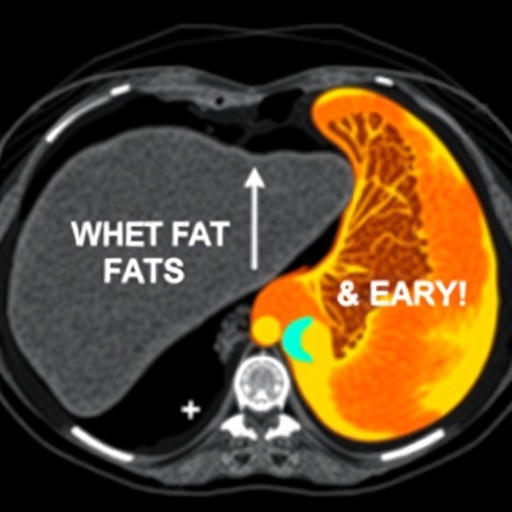In a recent study published by the JAMA Network, researchers investigated the effects of ferric carboxymaltose on patients suffering from heart failure and concurrent iron deficiency. Heart failure is a significant global health issue, characterized by the heart’s inability to pump blood efficiently, leading to various complications, including hospitalization and mortality. The underlying mechanisms contributing to heart failure are multifactorial, with iron deficiency known to exacerbate the condition, leading to poorer outcomes for affected individuals.
Ferric carboxymaltose, an iron replacement therapy administered intravenously, has been employed to address iron deficiency in various clinical settings. Its role in mitigating heart failure symptoms has garnered significant interest among clinicians, researchers, and patients alike. Numerous prior investigations have hinted at the potential benefits of iron supplementation in heart failure management. However, the latest findings challenge some of the assumptions held by the medical community about this treatment modality.
The trial in question meticulously evaluated the effectiveness of ferric carboxymaltose by comparing it to a placebo among patients with heart failure and existing iron deficiency. Researchers were tasked with scrutinizing endpoints such as the time to first heart failure hospitalization and rates of cardiovascular death, as these are critical indicators of treatment efficacy. The study meticulously included patients with a transferrin saturation below 20%, a group particularly vulnerable to adverse outcomes due to iron deficiency.
However, the results of this thorough investigation revealed that ferric carboxymaltose did not significantly alter the time to the first hospitalization due to heart failure or cardiovascular death when evaluated across the entire cohort. Moreover, the subgroup of patients with lower transferrin saturation also did not exhibit a statistically significant reduction in hospitalizations when compared to the placebo group. These outcomes suggest that simply providing iron therapy may not tangibly influence the course of heart failure in the studied population.
While the findings may be disappointing for those advocating for iron supplementation as a cornerstone in the management strategies for heart failure, they offer critical insights into physiological responses and treatment interactions. Heart failure is a complex syndrome influenced by multiple factors, including the underlying etiology and various comorbid conditions. As such, the simplistic approach of adding iron into the treatment mix does not automatically confer benefits to patients experiencing its debilitating symptoms.
The researchers posited that ferric carboxymaltose may not address the underlying pathophysiological processes related to heart failure in the same way it could theoretically improve symptoms in other conditions tied to iron deficiency. The data obtained from this trial aligns with the growing body of evidence that calls for a more nuanced understanding of patient-specific factors when developing treatment strategies. Herein lies the importance of personalized medicine, where individual patient profiles guide therapeutic decisions rather than a one-size-fits-all methodology.
As this study is presented at the American College of Cardiology’s Annual Scientific Session, it is likely to provoke considerable discussion among cardiologists and researchers in the field. While the use of ferric carboxymaltose for heart failure-related iron deficiency may not yield the desired clinical outcomes reported in previous studies or clinical experiences, it opens avenues for future research to identify which patient populations might benefit from such interventions. Perhaps further research focused on more specific patient subsets or interventions targeting additional physiological pathways could yield more promising results.
Furthermore, the study underscores the importance of rigorous clinical trials to dissect complex interactions that may not be immediately apparent through observational studies. Even within a seemingly clear-cut relationship like iron deficiency and heart failure, the findings serve as a reminder not to assume causation based purely on correlations. This reinforces the need for continued investigation into alternative therapies and treatment strategies that may more safely and effectively mitigate the burdens associated with heart failure.
The implications of these findings extend beyond the individual patient to encompass broader health care systems, where the allocation of resources and decisions around treatment options must be informed by evidence-based conclusions. Clinical guidelines that fail to incorporate data from comprehensive studies may inadvertently steer practitioners toward ineffective treatment modalities, posing risks to patient health and systemic sustainability. The challenge remains to integrate learnings from this study into clinical practice while developing innovative strategies that prioritize patient outcomes.
Future research directions may include exploring the molecular mechanisms underlying iron deficiency in heart failure, as well as assessing the combined effects of iron therapy with other treatments that address cardiovascular dysfunction. It is conceivable that targeting multiple pathways simultaneously could enhance therapeutic efficacy and provide patients with more holistic treatment plans. As always, the close collaboration between researchers and clinicians will be pivotal in translating these research findings into actionable strategies that can enhance patient care.
In conclusion, this study highlights a crucial episode in the pursuit of effective therapies for heart failure. While ferric carboxymaltose may not have demonstrated the anticipated benefits in this scenario, it serves as a catalyst for further inquiry and exploration into the complex interplay of iron metabolism and cardiac health. Continued research efforts and adaptive clinical practices will be essential as we strive to improve treatment outcomes for the millions affected by heart failure worldwide.
Subject of Research: The effects of ferric carboxymaltose on patients with heart failure and iron deficiency
Article Title: Efficacy of Ferric Carboxymaltose in Heart Failure Patients with Iron Deficiency
News Publication Date: 2025
Web References:
References:
Image Credits:
Keywords: Heart failure, Iron deficiency, Ferric carboxymaltose, Cardiovascular health, Clinical trials, Personalized medicine, Treatment outcomes, Research implications.
Tags: cardiovascular health outcomeschronic heart failure complicationsclinical trial findingsferric carboxymaltose effectivenessheart failure hospitalization ratesheart failure managementintravenous ferric carboxymaltoseiron deficiency treatmentiron replacement therapyiron supplementation benefitsJAMA Network researchpatient outcomes in heart failure





